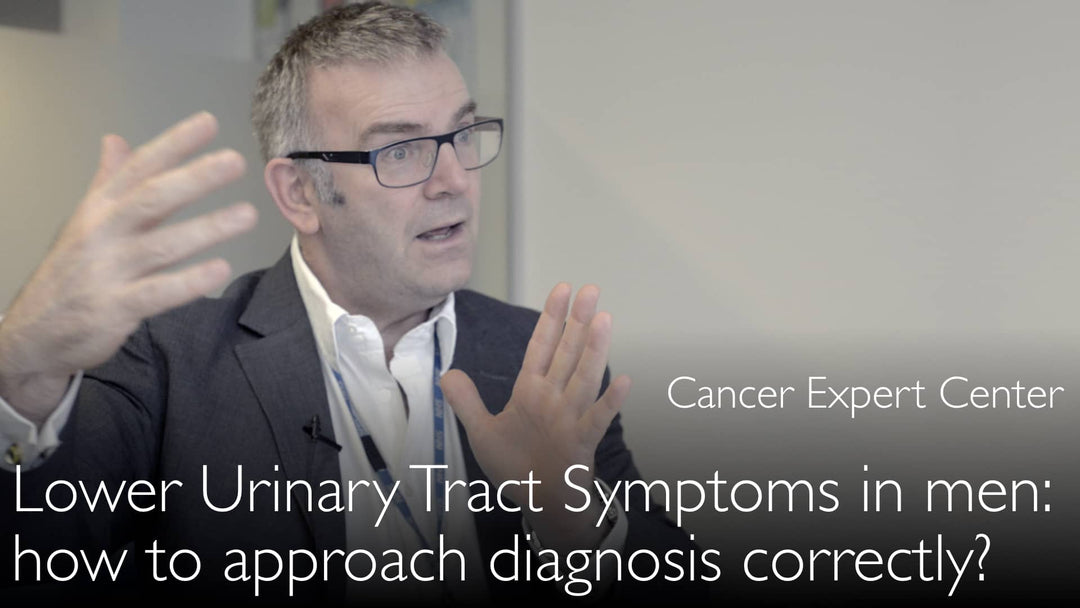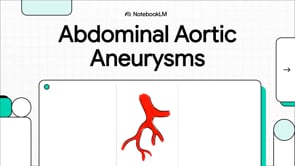비뇨기과 및 전립선 질환 분야의 선도적 전문가인 Mark Emberton 박사(MD)가 남성 하부 요로 증후군(LUTS)의 정확한 진단과 치료법을 설명합니다. 그는 신장 기능, 방광 불안정성, 전립선 비대 등 LUTS의 다양한 원인을 상세히 다루며, 초음파와 배뇨 일지를 활용한 실용적인 진단 접근법을 소개합니다. Mark Emberton 박사(MD)는 생활습관 개선과 표적 약물 치료로 대부분의 환자 증상을 호전시킬 수 있음을 강조하고, 방광 기능이 현저히 저하된 중증 환자에 한해 수술을 고려해야 한다고 말합니다.
남성 하부 요로 증후군(LUTS)의 진단과 치료
목차 바로가기
- LUTS의 다양한 원인 이해
- 방광의 주요 기능과 LUTS 진단
- LUTS 초기 진단 평가
- 주요 진단 검사: 초음파와 배뇨 일지
- LUTS 치료 옵션: 생활습관 교정부터 약물 치료까지
- 중증 LUTS의 수술적 치료
- LUTS 관리에 관한 전문가 인사이트
LUTS의 다양한 원인 이해
남성의 하부 요로 증후군(LUTS)은 매우 흔하며, 40세 이상 남성의 최대 40%까지 영향을 미칩니다. Mark Emberton 박사(MD)가 설명하듯, LUTS는 단일 원인이 아닌 다양한 요인에 의해 발생합니다. 전체 요로 시스템이 증상에 기여할 수 있습니다. 인지 기능 장애나 퇴행성 질환과 같은 신경학적 요인은 방광 충만감에 대한 뇌의 인식을 저하시킬 수 있습니다. 척수 손상은 방광을 과도하게 활성화시킬 수도 있습니다.
Mark Emberton 박사(MD)는 신장 기능도 나이와 함께 변화한다고 지적합니다. 노화된 신장은 야간에 소변을 농축하는 능력이 감소하는데, 이는 항이뇨호르몬(ADH)에 의해 조절되는 과정입니다. 이는 직접적으로 야간뇨증(nocturia), 즉 밤에 자주 소변을 보는 증상으로 이어집니다. 방광 자체도 변화를 겪습니다. 방광벽이 두꺼워지고 불안정해지며, 흉터 조직이 생기고, 탈장이 발생하여 수축력이 떨어집니다. 마지막으로 전립선 비대와 비만은 하부 요로의 해부학적 구조를 변화시켜 소변 흐름의 저항을 증가시킬 수 있습니다.
방광의 주요 기능과 LUTS 진단
하부 요로 증후군 진단의 핵심은 방광의 두 가지 주요 기능 중 어느 쪽이 더 크게 영향을 받는지 파악하는 것입니다. Mark Emberton 박사(MD)는 요로 시스템이 저압 상태에서 소변을 저장해야 할 뿐 아니라 효율적이고 완전하게 배출해야 한다고 설명합니다. LUTS 환자 대부분은 저장 장애(절박뇨, 빈뇨 등)와 배뇨 장애(약한 소변 흐름, 주저 등)가 함께 나타납니다. 단순히 전립선 비대로 인한 배출 문제만 있는 환자는 매우 드뭅니다.
치료의 핵심은 지배적인 기능 장애에 치료를 집중하는 것입니다. 이는 소변을 제대로 저장하지 못하는 문제와 방광을 효과적으로 비우지 못하는 문제를 구분하기 위한 신중한 진단 과정이 필요합니다. 이 차이를 이해하면 하부 요로 증후군을 더 정확하고 효과적으로 치료할 수 있습니다.
LUTS 초기 진단 평가
LUTS 환자를 평가할 때 첫 번째 단계는 심각한 기저 질환을 배제하는 것입니다. Mark Emberton 박사(MD)는 복잡한 비뇨기과적 문제가 없음을 확인하는 것이 목표라고 강조합니다. 이는 요로 감염 징후, 소변에 혈액이 섞인 경우(혈뇨), 또는 방광암이나 결석을 의심할 수 있는 다른 위험 신호를 확인하는 것을 포함합니다.
다행히, Mark Emberton 박사(MD)가 지적하듯, 이러한 복잡한 문제는 매우 소수의 환자에서만 발견됩니다—약 2% 정도입니다. 증상을 호소하는 남성의 대다수는 비복합성, 즉 양성 하부 요로 증후군으로 진단됩니다. 이 초기 선별은 이후 더 집중된 진단 검사를 안내하고 환자 안전을 보장하는 데 중요합니다.
주요 진단 검사: 초음파와 배뇨 일지
Mark Emberton 박사(MD)는 환자의 LUTS 원인을 파악하기 위해 두 가지 주요 진단 검사를 활용합니다. 첫 번째는 소변을 본 후 시행하는 방광 초음파 검사입니다. 이 잔뇨량(PVR) 검사는 방광이 얼마나 잘 비워지는지 측정하여 소변 정체 문제를 확인합니다.
두 번째로 동등히 중요한 검사는 3일간의 배뇨 일지입니다. Mark Emberton 박사(MD)는 이를 통해 기능적 방광 용량과 주야간 패턴을 이해하는 데 매우 가치 있다고 봅니다. 이 일지는 각 배뇨의 양과 시간을 기록합니다. Emberton 박사는 놀라운 예를 들었습니다: 과도하게 마시지 않았다고 주장하던 환자가 실제로 하루에 5.5리터의 소변을 생산하고 있었습니다. 이는 그가 거의 매시간 대량의 소변을 보게 되었음을 의미하며, 단순히 수분 섭취를 줄이는 것으로 해결된 문제였습니다. 일지는 환자의 주관적 기억보다 종종 더 신뢰할 수 있는 객관적 데이터를 제공합니다.
LUTS 치료 옵션: 생활습관 교정부터 약물 치료까지
하부 요로 증후군의 치료는 진단 결과에 따라 진행되며, 종종 약물 없이도 성공적입니다. Mark Emberton 박사(MD)는 첫 번째 단계는 상황을 이해하고 생활습관 변화를 시도하는 것이라고 말합니다. 하루 5.5리터의 소변을 생산하던 환자의 경우, 치료는 단순히 저녁 시간대의 수분 섭취를 줄이는 것이었습니다.
생활습관 변경만으로는 부족할 때는 표적 약물 치료가 사용됩니다. 과활성화되고 불안정한 방광을 진정시키기 위해 항콜린제나 베타-3 작용제가 처방될 수 있습니다. 전립선을 이완시키고 배출구 저항을 줄이기 위해 알파 차단제가 효과적입니다. 현저히 비대된 전립선을 가진 남성의 경우, 5-알파 환원효소 억제제를 사용하여 시간이 지남에 따라 전립선을 축소시킬 수 있습니다. Mark Emberton 박사(MD)는 이 단계적 접근법이 대다수 환자의 하부 요로 증후군을 해결한다고 지적합니다.
중증 LUTS의 수술적 치료
보존적 및 약물 치료에 반응하지 않는 소수 환자의 경우 수술적 개입이 필요합니다. Mark Emberton 박사(MD)는 이들은 일반적으로 소변을 전혀 보지 못하거나 장기간 폐색으로 인해 심하게 손상되고 약해진 방광을 가진 환자들이라고 설명합니다.
수술의 목표는 방광의 배출 저항을 줄여 소변을 더 쉽게 배출할 수 있도록 하는 것입니다. 이는 경요도 전립선 절제술(TURP)이나 레이저 전립선 절제술과 같은 시술을 통해 가장 일반적으로 달성됩니다. 이러한 수술의 성공률은 70%에서 90%로 높지만, 수술 전 방광 근육 자체의 기능 상태에 크게 의존합니다.
LUTS 관리에 관한 전문가 인사이트
Anton Titov 박사(MD)와의 논의에서 Mark Emberton 박사(MD)는 노화하는 남성 인구의 큰 부분에 영향을 미치는 이 상태를 관리하기 위한 포괄적인 프레임워크를 제시합니다. 그의 접근법은 체계적이며, 각 환자의 증상에 기여하는 고유한 요인을 이해하기 위한 철저한 조사로 시작합니다.
Emberton 박사의 통찰력은 효과적인 치료가 일률적이지 않음을 강조합니다. 치료가 방광, 전립선, 또는 환자의 습관 중 어디에 집중되어야 하는지 결정하기 위한 신중한 진단이 필요합니다. 이 미묘한 전략은 진단의 정밀성과 단계적 치료 계획을 결합하여 하부 요로 증후군을 경험하는 수백만 남성에게 희망과 효과적인 해결책을 제공합니다.
전체 대화록
Anton Titov 박사(MD): 남성의 하부 요로 증후군(LUTS)은 40세 이후 흔합니다. LUTS를 어떻게 진단하고 치료하나요? 약한 방광, 비대된 전립선, 감소된 신장 기능이 하부 요로 증후군을 유발합니다.
40세 이상 남성의 40%가 하부 요로 증후군(LUTS)을 경험합니다. 그들은 비뇨기과 전문의나 일반의를 찾아갑니다. 하부 요로 증후군의 원인을 확인하기 위한 일반적인 진단 경로와 진단 검사는 무엇인가요?
Mark Emberton 박사(MD): 하부 요로 증후군은 매우 흔합니다. 다양한 원인이 복합적으로 작용합니다. 저는 하부 요로 증후군이 광범위한 기반에서 발생한다고 생각합니다. 그 중 일부는 신경계의 악화 때문입니다.
위에서부터 시작하겠습니다. 분명히, 인지 기능 장애가 있다면 방광이 채워질 때를 인지하지 못할 수 있습니다. 소변을 보고 싶은 감각, 절박감을 인지하지 못할 수 있습니다. 우리는 일부 신경퇴행성 질환이 방광 기능에 영향을 미친다는 것을 압니다.
척수 손상이 있다면 방광이 훨씬 더 활성화됩니다. 그다음 우리는 신장에 초점을 맞춥니다. 나이가 들수록 신장은 야간에 소변을 농축하는 능력이 떨어집니다.
이는 저녁에 차, 와인, 또는 맥주를 마시면 밤에 소변을 보기 위해 일어날 가능성이 더 높다는 것을 의미합니다. 10년 전에는 밤에 전혀 일어나지 않았던 환자가 이제 밤에 세 번 일어나 소변을 본다고 보고하는 것을 볼 수 있습니다. 그 대부분은 신장이 소변을 농축하지 못하는 이 불능 때문입니다.
ADH라는 물질이 신장에서 분비됩니다. 그다음 우리는 방광으로 내려갑니다. 방광벽이 두꺼워집니다. 더 불안정해집니다.
방광벽은 흉터 조직으로 채워집니다. 시간이 지남에 따라 탈장이 발생합니다. 그래서 방광은 그 활력을 잃습니다.
방광 근육이 수축하기를 원할 때, 예전만큼 잘 수축하지 않습니다. 그리고 나서 비대해지는 전립선이 있습니다. 그다음 아마도 비만이 있을 수 있는데, 이는 하부 요로의 모양을 변화시킵니다.
이 모든 것들이 두 기능에 영향을 미칠 수 있습니다. 하나는 저압에서 방광에 소변을 저장하는 것입니다. 두 번째 기능은 한 번에 효율적으로 배출하는 것입니다.
하부 요로 증후군 진단의 핵심은 그 두 과정 중 어느 것이 지배적인지 찾아내는 것입니다. 그것들은 보통 공유됩니다. 단순히 배출구 문제만 있는 LUTS 환자를 찾는 것은 매우 드뭅니다.
Anton Titov 박사(MD): 그리고 검사들은 하부 요로 증후군의 그 두 원인을 구별하려고 합니다.
Mark Emberton 박사(MD): 그래서 제가 주로 하는 것은 복잡한 측면, 즉 비뇨기과적 문제, 감염 징후, 소변에 혈액이 섞인 징후가 없는지 확인하는 것입니다. 그것은 매우 소수의 환자에게서 발생합니다, 약 2% 정도입니다. 나머지 환자들은 비복합성 하부 요로 증후군을 가지고 있습니다.
그런 다음 저는 주로 두 가지 검사를 합니다. 하나의 진단 검사는 방광이 얼마나 잘 비워지는지 확인하는 것입니다. 그것은 초음파 검사입니다.
그런 다음 다른 검사를 합니다. 저는 환자에게 3일 동안 일지를 작성하도록 요청합니다. 이것은 저에게 그들의 기능적 용량에 대한 아이디어를 줍니다.
이는 하루와 밤 동안 방광이 어떻게 작동하는지 보여줍니다. 24시간 동안 환자가 얼마나 많은 소변을 배출하는지가 정말 중요합니다. 꽤 놀라웠습니다.
저는 어제 한 환자를 봤는데, 그는 저에게 너무 많은 물을 마시지 않았다고 맹세했지만, 하루에 5.5리터의 소변을 생산하고 있었습니다. 우리 대부분은 기껏해야 400에서 500밀리리터의 소변을 냅니다. 그래서 그는 하루에 5리터를 배출하고 있었습니다.
그는 하루에 10번 반 리터씩 소변을 보야 했습니다. 기억하세요, 그는 하루의 삼분의 일 또는 절반을 자고 있습니다. 그래서 그는 매시간, 한 시간마다 소변을 보고 있었습니다.
그가 해야 할 일은 덜 마시는 것뿐이었습니다, 왜냐하면 그의 방광은 완벽하게 작동하고 매우 잘 비워졌기 때문입니다. 그래서 이 두 진단 검사는 LUTS에 대한 탁월한 통찰력을 제공합니다.
그런 다음 치료를 방광, 전립선, 개인에게 집중합니다. 보통 우리는 어떤 약물도 사용하지 않고 해결할 수 있습니다. 우리는 무슨 일이 일어나고 있는지 이해해야 합니다.
우리는 생활습관 변화를 사용하여 LUTS를 개선해야 합니다. 그런 다음 때로는 약물로 방광을 진정시켜야 할 수도 있습니다. 때로는 약물로 전립선을 이완시켜야 할 수도 있습니다.
때로는 약물로 전립선을 축소시켜야 할 수도 있습니다. 그것은 대다수 환자의 LUTS를 해결할 것입니다.
배뇨가 전혀 불가능하고 방광 기능이 심각하게 손상되어 매우 약해진 남은 환자들에서는 수술이 필요할 수 있습니다. 실제로 할 수 있는 모든 것은 방광 배출 저항을 제거하거나 감소시키는 것입니다.
방광이 더 쉽게 비워질 수 있도록 만들어야 합니다. 이는 방광 기능 상태에 따라 환자의 70%에서 90%에서 성공적입니다.
Anton Titov 박사: Emberton 교수님, 전립선암과 비뇨기학의 다른 문제들에 대해 이렇게 상세하고 매력적인 대담을 해주셔서 대단히 감사합니다. 전 세계 시청자들에게 매우 유용한 정보가 되길 바랍니다. 정말 감사합니다!
전립선암과 하부 요로 증상에 대해 교수님과 논의할 수 있어 큰 영광이었습니다! 교수님은 매우 전문적인 지식을 갖고 계십니다. 어떻게 이렇게 전문적이게 되셨나요?






